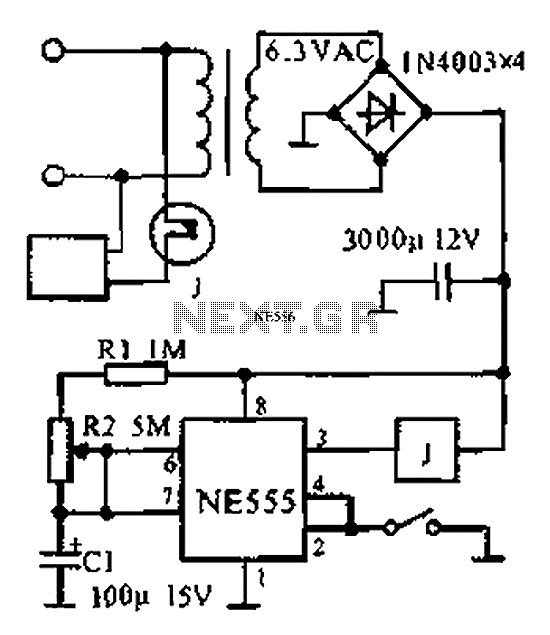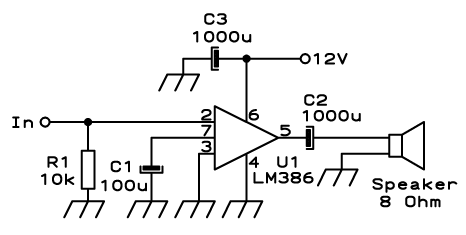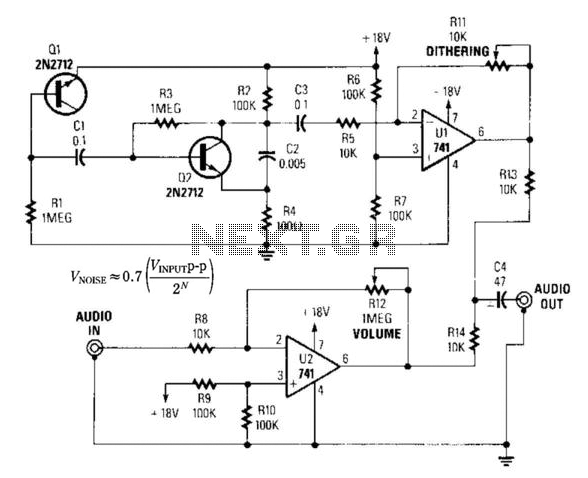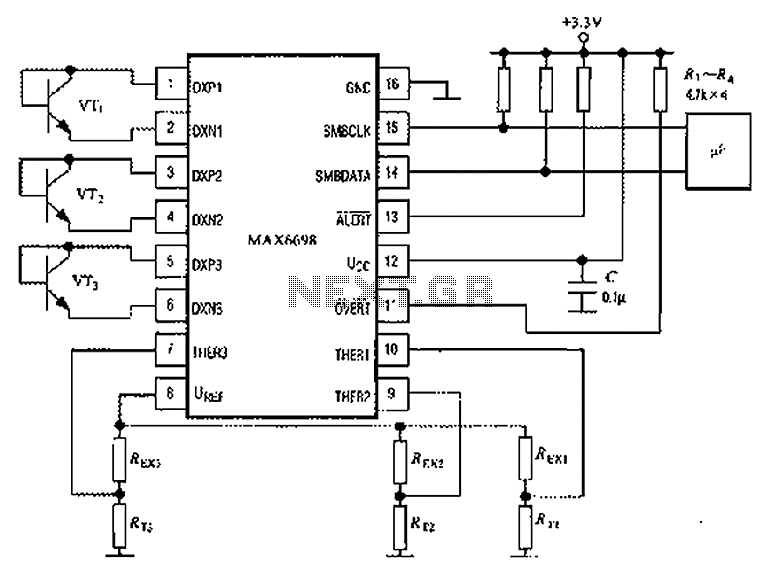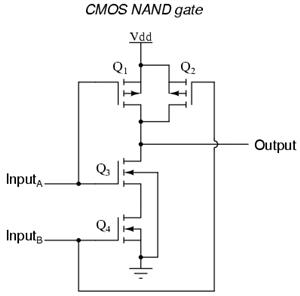
Electronic Diagram Mixer Audio
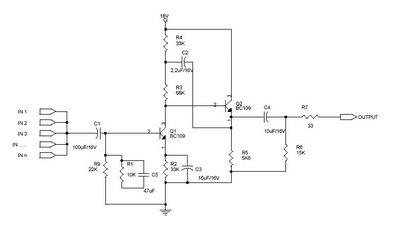
This circuit, referred to as an Audio Mixer, is a very simple design that utilizes easily obtainable components. Typically, audio mixer circuits require several integrated circuits (ICs); however, this particular audio mixer circuit relies solely on transistors as its foundation. For optimal performance, it is recommended to use a protective reactor with a tolerance of 1%.
The Audio Mixer circuit operates by combining multiple audio signals into a single output. The core of this design is based on bipolar junction transistors (BJTs) or field-effect transistors (FETs), which serve as the primary amplifying elements. The input audio signals are fed into the base (or gate) of the transistors, where they are mixed and amplified.
The circuit typically includes several input channels, each with its own gain control to adjust the level of each audio source before mixing. A resistor-capacitor (RC) network may be employed for each channel to filter out unwanted frequencies, ensuring that only the desired audio signals are processed. The outputs from each transistor are then combined at a common node, which leads to the output stage.
To enhance performance and protect the circuit from potential over-voltage or current surges, a protective reactor is integrated into the design. This reactor, with a tolerance of 1%, helps to stabilize the circuit by smoothing out fluctuations in the power supply and preventing distortion in the audio output.
In summary, this simple transistor-based audio mixer circuit provides an accessible solution for mixing audio signals, making it suitable for various applications in audio processing and sound reinforcement systems. Its straightforward design and the use of common components make it an excellent choice for both hobbyists and professionals looking to implement basic audio mixing functionality.This scheme named Audio Mixer a real very simple and component easy to be got, generally circuit Audio Mixer is used with a few IC, but at this Audio Mixer circuit only requires transistor as its brace. For good result applied preventive reactor with tolerance 1%. 🔗 External reference
The Audio Mixer circuit operates by combining multiple audio signals into a single output. The core of this design is based on bipolar junction transistors (BJTs) or field-effect transistors (FETs), which serve as the primary amplifying elements. The input audio signals are fed into the base (or gate) of the transistors, where they are mixed and amplified.
The circuit typically includes several input channels, each with its own gain control to adjust the level of each audio source before mixing. A resistor-capacitor (RC) network may be employed for each channel to filter out unwanted frequencies, ensuring that only the desired audio signals are processed. The outputs from each transistor are then combined at a common node, which leads to the output stage.
To enhance performance and protect the circuit from potential over-voltage or current surges, a protective reactor is integrated into the design. This reactor, with a tolerance of 1%, helps to stabilize the circuit by smoothing out fluctuations in the power supply and preventing distortion in the audio output.
In summary, this simple transistor-based audio mixer circuit provides an accessible solution for mixing audio signals, making it suitable for various applications in audio processing and sound reinforcement systems. Its straightforward design and the use of common components make it an excellent choice for both hobbyists and professionals looking to implement basic audio mixing functionality.This scheme named Audio Mixer a real very simple and component easy to be got, generally circuit Audio Mixer is used with a few IC, but at this Audio Mixer circuit only requires transistor as its brace. For good result applied preventive reactor with tolerance 1%. 🔗 External reference
